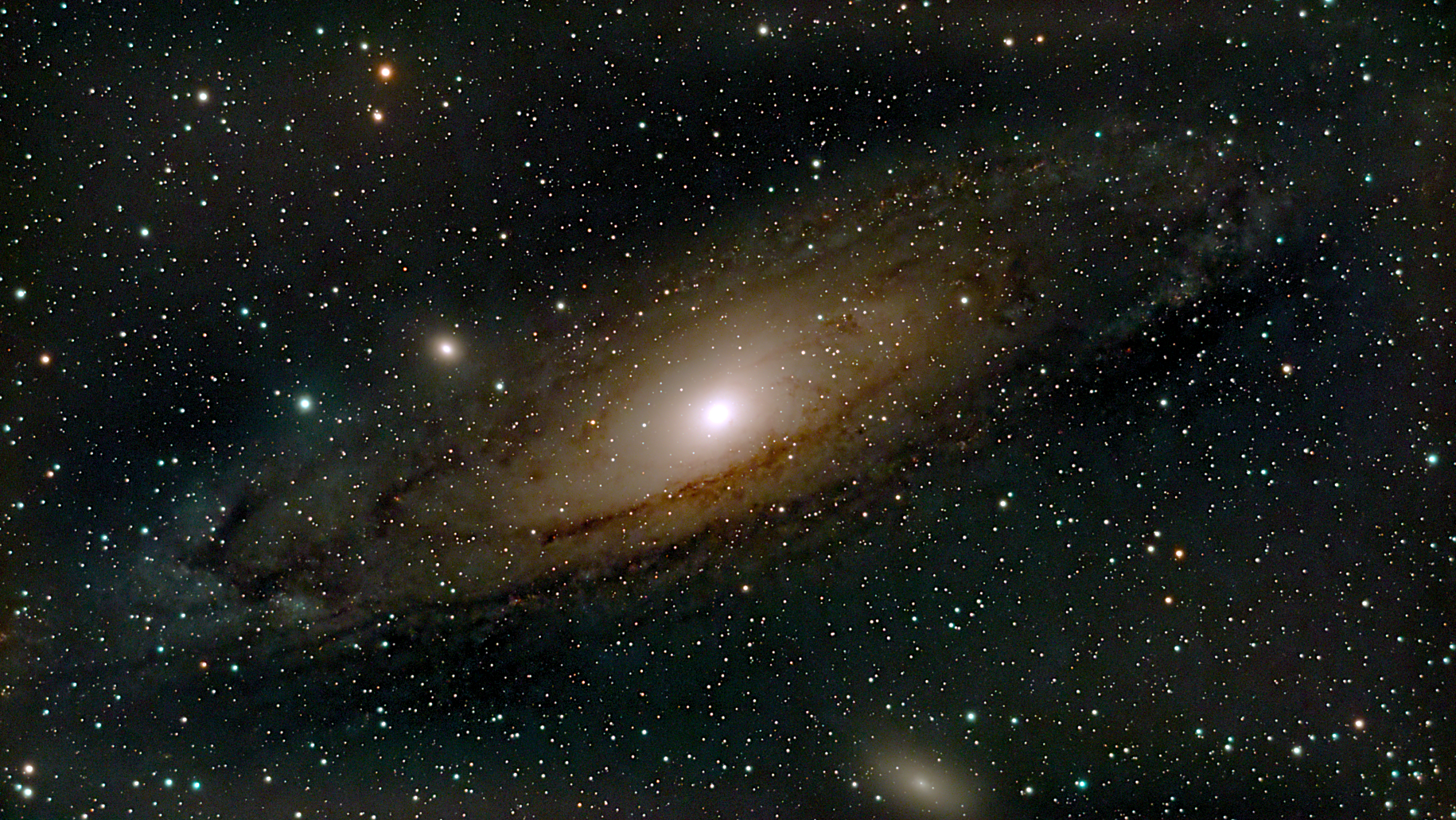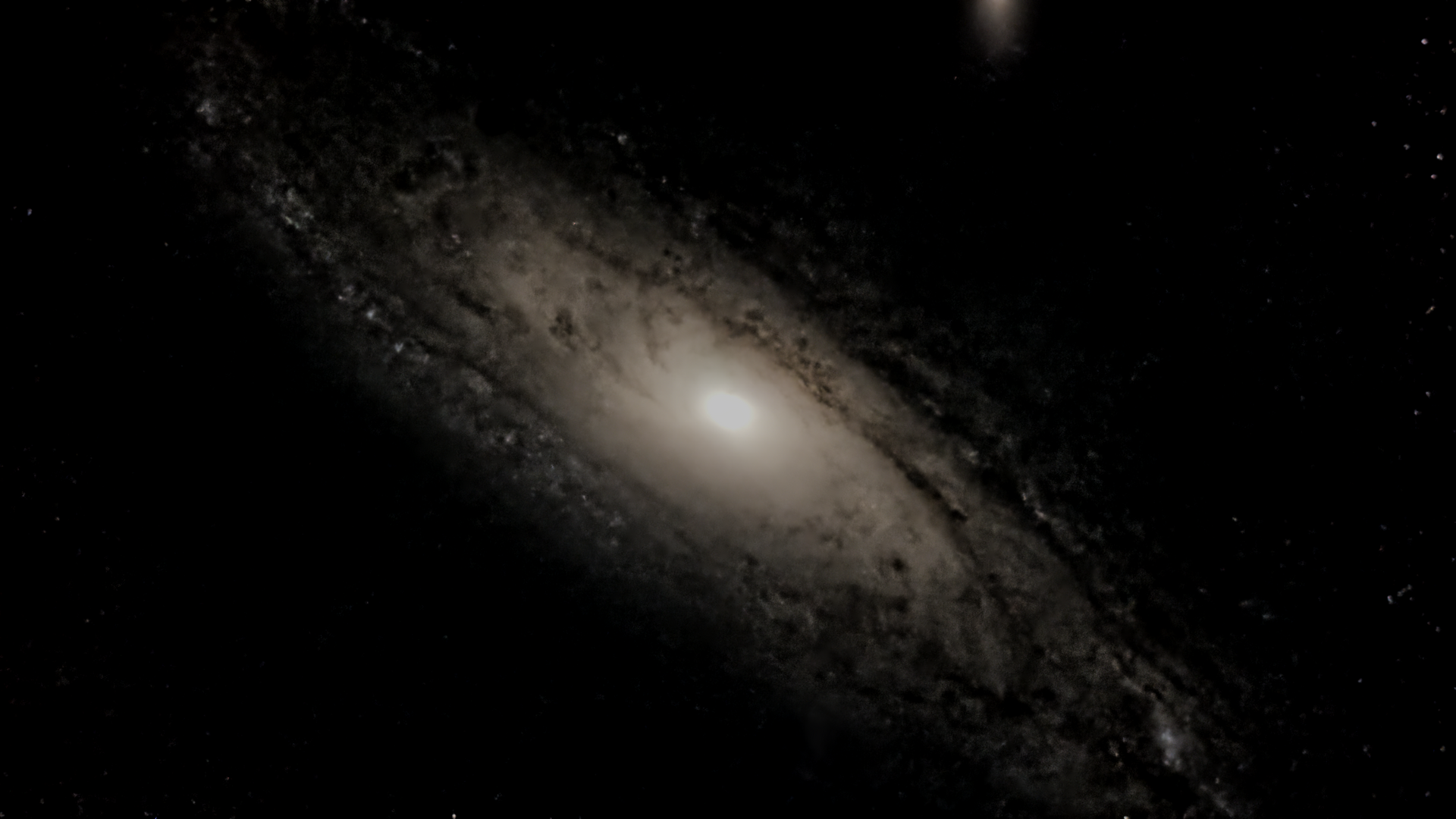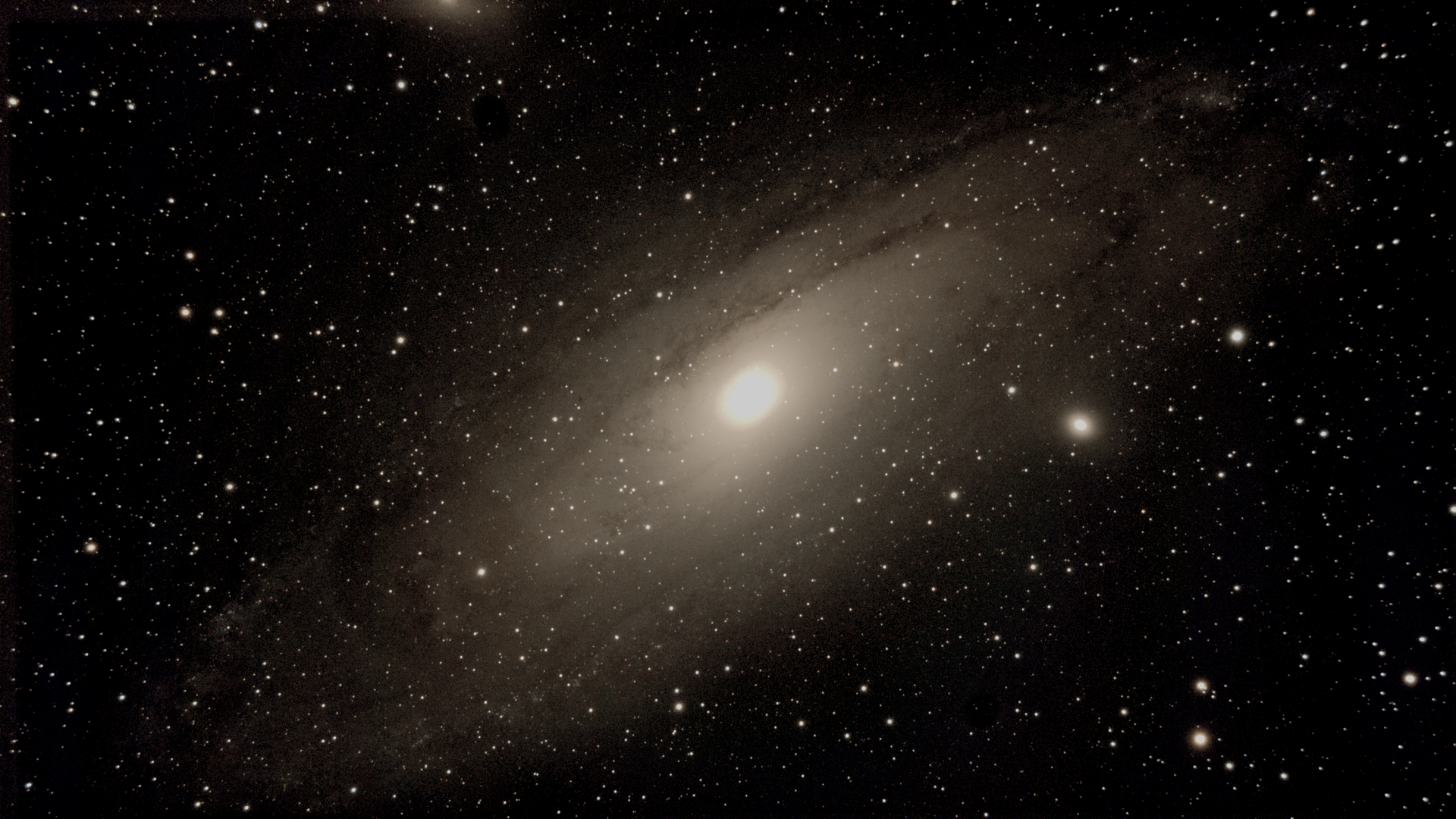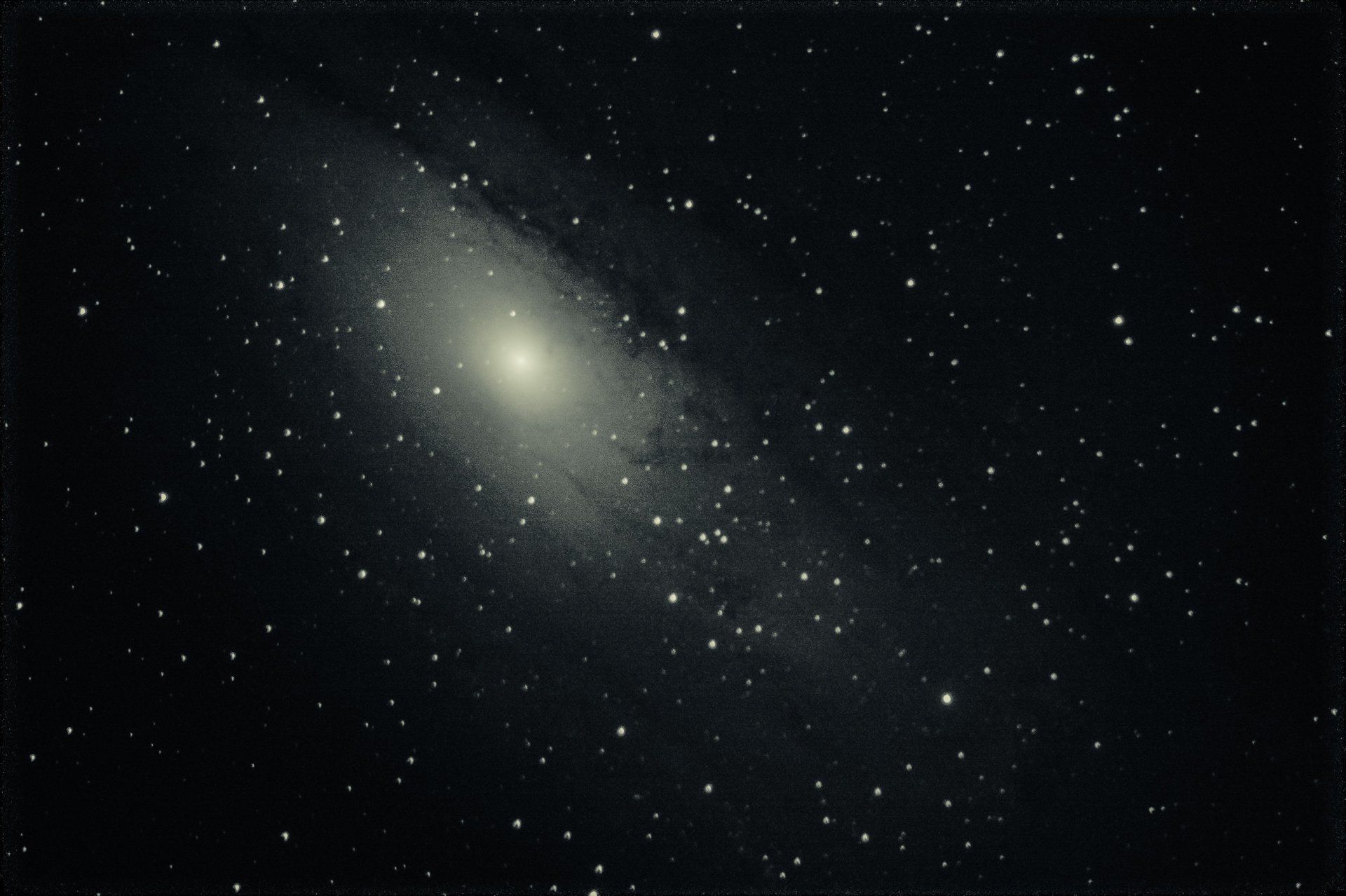M31/32/110
The Andromeda Galaxy (/ænˈdrɒmɪdə/), also known as Messier 31, M31, or NGC 224, is a spiral galaxy approximately 780 kiloparsecs (2.5 million light-years) from Earth, and the nearest major galaxy to the Milky Way. Its name stems from the area of the sky in which it appears, the constellation of Andromeda.
The 2006 observations by the Spitzer Space Telescope revealed that the Andromeda Galaxy contains approximately one trillion stars, more than twice the number of the Milky Way's estimated 200 to 400 billion stars. The Andromeda Galaxy's mass is estimated to be around 1.76 times that of the Milky Way Galaxy (~0.8-1.5×1012 solar masses vs the Milky Way's 8.5×1011 solar masses), though a 2018 study found that the Andromeda Galaxy's mass is roughly the same as the Milky Way's. The Andromeda Galaxy, spanning approximately 220,000 light-years, is the largest galaxy in our Local Group, which is also home to the Triangulum Galaxy and other minor galaxies.
The Milky Way and Andromeda galaxies are expected to collide in ~4.5 billion years, merging to form a giant elliptical galaxy or a large disc galaxy. With an apparent magnitude of 3.4, the Andromeda Galaxy is among the brightest of the Messier objects making it visible to the naked eye on moonless nights, even when viewed from areas with moderate light pollution.
Messier 32 (also known as M32 and NGC 221) is a dwarf "early-type" galaxy located about 2.65 million light-years from Earth, appearing in the constellation Andromeda. M32 is a satellite galaxy of the Andromeda Galaxy (M31) and was discovered by Guillaume Le Gentil in 1749. M32 measures 6.5 ± 0.2 thousand light-years in diameter at the widest point.
The galaxy is a prototype of the relatively rare, compact elliptical (cE) galaxy class. Half the stars concentrate within an effective radius of only 100 parsecs. Densities in the central stellar cusp increase steeply, exceeding 3×107 M⊙ pc−3 at the smallest radii resolved by HST, and the half-light radius of this central star cluster is around 6 parsec. Like more ordinary elliptical galaxies, M32 contains mostly older faint red and yellow stars with practically no dust or gas and consequently no current star formation. It does, however, show hints of star formation in the relatively recent past.
Messier 110 or M110, also known as NGC 205, is a dwarf elliptical galaxy that is a satellite of the Andromeda Galaxy. Although Charles Messier never included the galaxy in his list, it was depicted by him, together with M32, on a drawing of the Andromeda galaxy; a label on the drawing indicates that Messier first observed NGC 205 on August 10, 1773. The galaxy was independently discovered by Caroline Herschel on August 27, 1783; her brother William Herschel described her discovery in 1785. The suggestion to assign the galaxy a Messier number was made by Kenneth Glyn Jones in 1967.
This galaxy has a morphological classification of pec dE5, indicating a dwarf elliptical galaxy with a flattening of 50%. M110 is designated peculiar because there are patches of dust and young blue stars located near the center. This is unusual for dwarf elliptical galaxies in general, and the reason for this peculiarity is unclear. Unlike M32, NGC 205 does not (as of 2005) show evidence for a supermassive black hole at its center.
The interstellar dust in M110 has a mass of (1.1–1.8)×104 M☉ with a temperature of 18–22 K, and the interstellar gas has (4–7)×106 M☉. The inner regions of M110 show a deficiency in the interstellar medium (IM) materials, which most likely were ejected by supernova explosions. Tidal interactions with M31 may have stripped away a significant fraction of the expelled gas and dust, leaving the galaxy as a whole deficient in its IM density.
A few novae have been detected in this galaxy, including one discovered in 1999 by Johnson and Modjaz, and another detected in 2002, by Nakano and Sumoto. The latter, designated EQ J004015.8+414420, had also been captured in images taken by the Sloan Digital Sky Survey (SDSS) in October, 2002.
About half of the Andromeda's satellite galaxies are orbiting the host galaxy along a highly flattened plane, with 14 out of 16 following the same sense of rotation. One theory proposes that these objects once belonged to a subhalo surrounding NGC 205, then the group was broken up by tidal forces during a close encounter with Andromeda.





